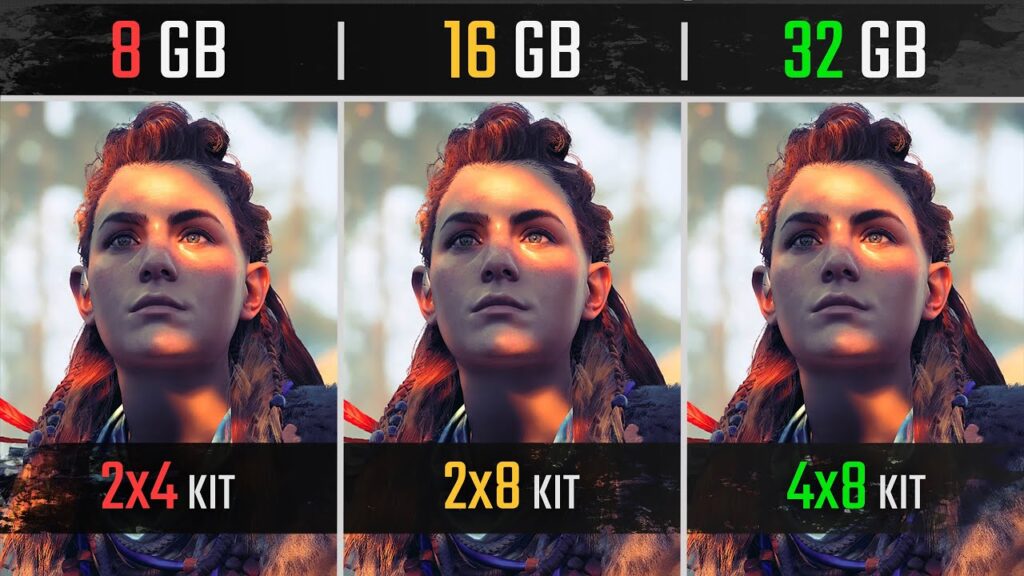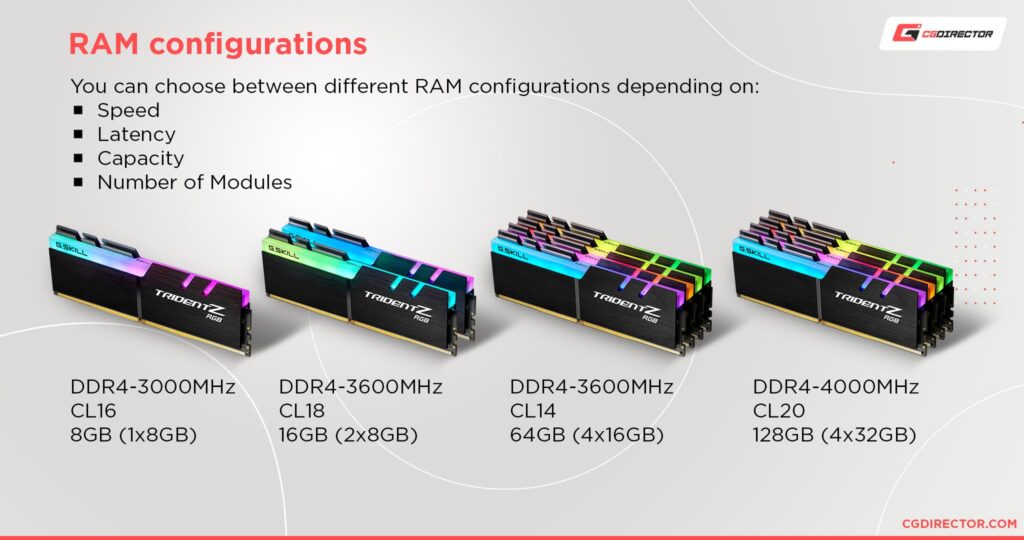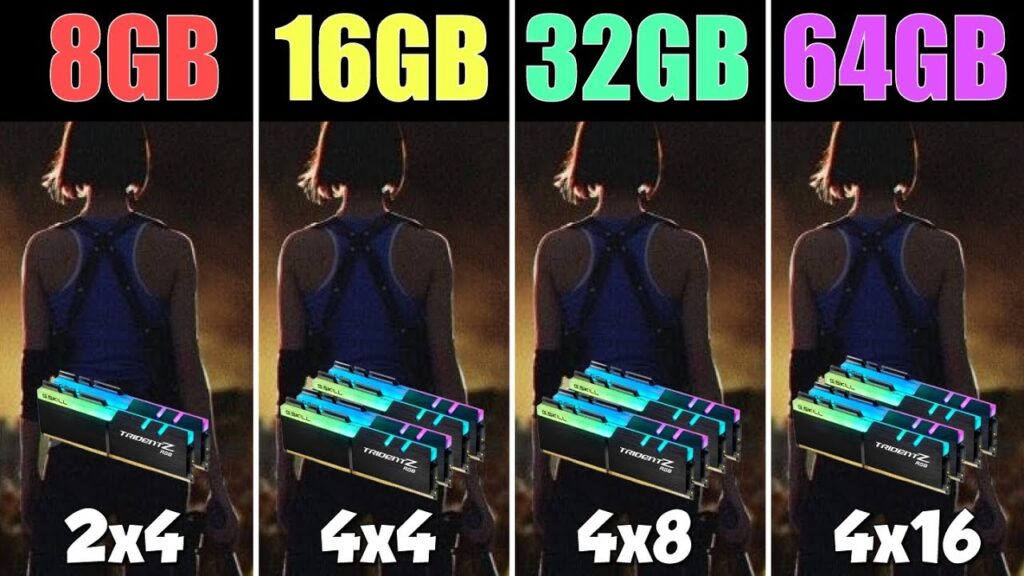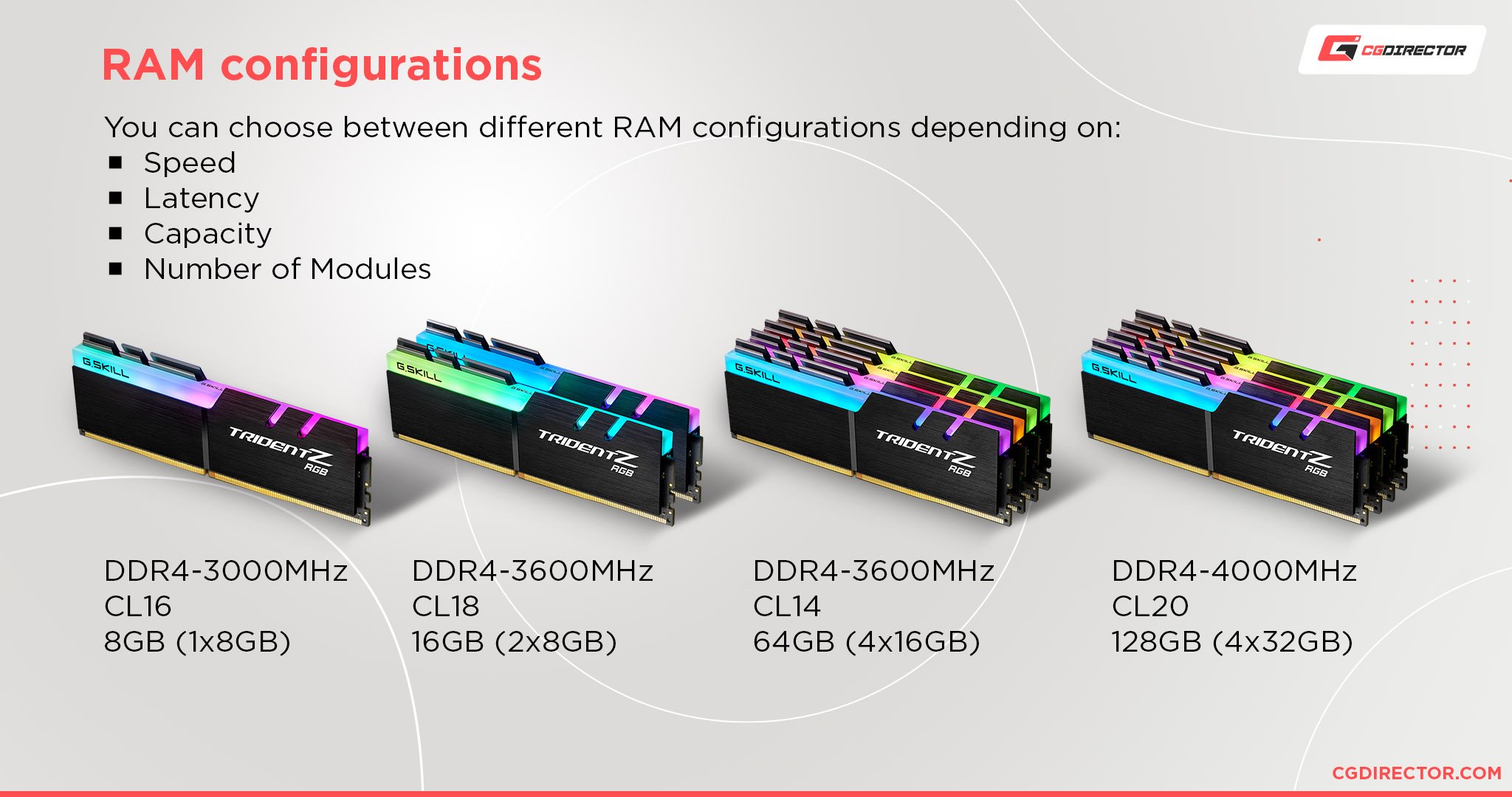So, you’ve been contemplating whether or not having 32 GB of RAM in your computer is a bit excessive. Maybe you’ve heard people raving about how it’s the ultimate solution for multitasking and running demanding applications smoothly. Or perhaps you’re just curious if it’s all just hype. Well, in this article, we’ll break down the pros and cons of having 32 GB RAM and help you decide if it’s an overkill or a worthy investment for your computing needs. Let’s get into it, shall we?

This image is property of i.ytimg.com.
What is RAM?
RAM, or Random Access Memory, is a crucial component of any computer system. It is a type of volatile memory that stores data and instructions that are actively used by the computer’s processor. RAM acts as a temporary workspace for the processor, allowing it to quickly access and manipulate data that is required for various tasks. Unlike the long-term storage provided by hard drives or solid-state drives, RAM provides fast and temporary storage that is essential for efficient and smooth operation of software applications.
Understanding RAM Requirements
When it comes to choosing the right amount of RAM for your computer system, it’s important to consider several factors that can influence your needs. These factors include the minimum requirements for your operating system, the specific tasks you will be performing on your computer, and your future-proofing considerations. Let’s explore each of these factors in more detail.
Minimum RAM Requirements
Every operating system has minimum RAM requirements to ensure proper functionality. These requirements are typically outlined by the operating system provider, such as Microsoft for Windows or Apple for macOS. Failing to meet the minimum RAM requirements can result in poor performance, system crashes, and compatibility issues with software applications. It is essential to check the minimum RAM requirements for your chosen operating system and ensure that your computer meets or exceeds these requirements.
Recommended RAM
While minimum RAM requirements provide a baseline for system functionality, it is often recommended to have more RAM for optimal performance. Recommended RAM specifications are typically higher than the minimum requirements and take into account factors such as multitasking, software usage, and future-proofing. It’s generally a good idea to aim for at least the recommended RAM specifications to ensure your computer can handle multiple tasks efficiently and handle future software upgrades.
RAM for Gaming
If you are a gamer, you may have specific RAM requirements to consider. Modern games often require large amounts of RAM to run smoothly. The amount of RAM needed for gaming depends on the complexity of the game and the system requirements provided by the game developer. Gaming enthusiasts and those who play resource-intensive games may benefit from having more RAM to ensure a lag-free and immersive gaming experience.
RAM for Video Editing
Video editing is another task that demands a significant amount of RAM. Video editing software relies heavily on RAM to store and process large video files, apply effects and transitions, and render the final output. The amount of RAM required for video editing can vary depending on the complexity and length of the videos being edited. Professional video editors often opt for higher RAM capacities to ensure smooth editing and rendering processes.
RAM for Programming and Development
Programmers and developers may also require large amounts of RAM, depending on the nature of their work. Compiling and running complex code, running virtual machines, and managing multiple development environments simultaneously can put a strain on system resources, including RAM. Having ample RAM can help improve productivity and reduce loading times for development tools and IDEs, allowing programmers to work more efficiently.

This image is property of www.cgdirector.com.
Factors Influencing RAM Needs
In addition to considering the specific requirements for your tasks, there are several other factors that can influence your RAM needs. Understanding and evaluating these factors can help you make an informed decision about the amount of RAM you should invest in.
Operating System
The operating system you choose to run on your computer can have a significant impact on your RAM requirements. Different operating systems have varying RAM usage and management strategies. For example, Windows 10 generally benefits from having more RAM due to its memory-intensive design. On the other hand, lightweight Linux distributions may be more efficient with lower amounts of RAM. It’s important to consider the RAM usage patterns of your chosen operating system and adjust your RAM capacity accordingly.
Multitasking
If you tend to multitask heavily on your computer, such as running multiple software applications simultaneously or having numerous browser tabs open, you will likely require more RAM. Each software application and browser tab consumes a portion of your available RAM, and having insufficient RAM can lead to slower performance and increased system lag. By considering your multitasking habits, you can determine the additional RAM needed to support your workflow effectively.
Software Usage
The specific software applications you use can significantly impact your RAM needs. Some software applications, such as graphic design tools or 3D modeling software, can be particularly resource-intensive, requiring more RAM to operate smoothly. Additionally, if you frequently work with large datasets or perform computationally-intensive tasks, you may benefit from having a higher RAM capacity to ensure efficient processing and analysis.
Future-proofing
When deciding on your RAM requirements, it’s important to consider your future needs and potential software upgrades. As technology advances, software applications typically become more resource-intensive and require more RAM to operate optimally. By investing in a higher RAM capacity, you can future-proof your computer to some extent, ensuring that it remains capable of handling newer software versions and increased system demands.
Budget
Of course, budget is an important consideration for most computer users. While having more RAM generally improves performance, it may not always be feasible to invest in the highest capacity available. By carefully assessing your needs and considering the factors mentioned above, you can strike a balance between performance and cost, ensuring that you have an adequate amount of RAM without breaking the bank.
Performance vs. Cost
The decision to invest in additional RAM boils down to finding the right balance between performance gains and cost. While increasing your RAM capacity generally improves system responsiveness and multitasking capabilities, there are diminishing returns in terms of noticeable performance improvements beyond a certain point. It’s important to evaluate the price-to-performance ratio and determine if the increase in RAM justifies the additional cost.
Price Increase with Higher RAM
The price of RAM increases with higher capacities. As you move up the RAM capacity ladder, the cost per gigabyte generally increases. This means that doubling your RAM capacity from 16 GB to 32 GB will have a cost increment significantly higher than the initial investment in 16 GB of RAM. It’s important to be aware of the price increase associated with higher RAM capacities, as this can impact your decision-making process.
Performance Improvement with Higher RAM
Having more RAM allows your computer to store and access a larger amount of data in its temporary workspace, resulting in improved performance in many scenarios. With higher RAM capacity, you can run more software applications simultaneously, open more browser tabs, and perform resource-intensive tasks more efficiently. This can greatly reduce loading times, prevent system lag, and provide a smoother overall user experience.
Price-to-Performance Ratio
To determine if investing in 32 GB of RAM is justifiable, it’s important to evaluate the price-to-performance ratio. This ratio considers the additional cost incurred by upgrading to 32 GB of RAM and compares it with the performance gains achieved. If the cost increase is relatively small compared to the noticeable improvements in performance and productivity, it may be justifiable to invest in the higher RAM capacity. However, if the performance gains are minimal and the cost increase is significant, it may be more cost-effective to opt for a lower RAM capacity.

This image is property of www.techspot.com.
32 GB RAM: When is it Justifiable?
Now that we have explored the various factors influencing RAM needs, let’s discuss some scenarios where opting for 32 GB of RAM is justifiable and can provide tangible benefits.
High-end Gaming
For avid gamers who play resource-intensive games or use virtual reality (VR) headsets, having 32 GB of RAM can significantly enhance the gaming experience. Games with high-resolution textures, complex physics simulations, and large open-world environments can require a substantial amount of RAM to run smoothly. Additionally, having more RAM allows gamers to run background processes, such as voice chat applications or game recording software, without impacting game performance.
Video Editing and Rendering
Video editing is a task that heavily relies on system resources, particularly RAM. When working with high-definition footage, performing complex edits, and rendering the final output, having 32 GB of RAM can greatly accelerate the process. Video editing software like Adobe Premiere Pro or DaVinci Resolve can leverage the additional RAM to store and process large video files, apply effects and transitions in real-time, and reduce rendering times.
Virtualization
For professionals who rely on virtualization technologies, such as running multiple virtual machines or creating virtual development environments, having 32 GB of RAM is advantageous. Each virtual machine requires a portion of system resources, including RAM, to operate efficiently. With 32 GB of RAM, you can allocate sufficient resources to each virtual machine, ensuring optimal performance and responsiveness.
Machine Learning and AI
Machine learning and AI applications often involve vast amounts of data processing and analysis. Training complex models and running data-intensive algorithms can benefit from higher RAM capacities. With 32 GB of RAM, you can load larger datasets into memory, execute data manipulations faster, and train AI models more efficiently. If you are involved in machine learning or AI development, 32 GB of RAM can provide a substantial performance boost.
Future-proofing
As technology advances, software applications become more resource-intensive, and the demand for RAM increases. By investing in 32 GB of RAM, you can future-proof your computer to some extent, ensuring that it remains capable of handling future software upgrades and increased system requirements. If you plan to keep your computer for several years without frequent upgrades, having a higher RAM capacity can provide peace of mind and longevity.
32 GB RAM: When is it Overkill?
While 32 GB of RAM can offer significant benefits in specific scenarios, it may be considered overkill in many everyday computing situations. Let’s explore some scenarios where opting for 32 GB of RAM may not be necessary.
Average Daily Usage
For users who engage in average daily computing tasks, such as web browsing, using office applications, and general multimedia consumption, 32 GB of RAM is typically excessive. These activities generally do not require large amounts of RAM to perform optimally, and a lower RAM capacity, such as 16 GB or even 8 GB, may be sufficient.
Web Browsing and Office Applications
Web browsing and working with office applications, such as word processors and spreadsheets, do not heavily rely on RAM. These software applications generally have modest memory requirements and can operate smoothly with lower RAM capacities. Unless you have specific requirements or work with extensive datasets in these applications, 32 GB of RAM is unlikely to offer significant performance improvements.
Casual Gaming
If you are a casual gamer who enjoys playing less resource-intensive games or older titles, 32 GB of RAM is not necessary. The vast majority of games available today can be comfortably played with lower RAM capacities, such as 8 GB or 16 GB. Investing in 32 GB of RAM for casual gaming would likely yield minimal performance gains and would be better allocated elsewhere.
Entry-level Video Editing
Those who engage in entry-level video editing, such as editing home videos or creating simple projects, typically do not require 32 GB of RAM. Editing software like iMovie or Windows Movie Maker can handle basic editing tasks with lower RAM capacities. Unless you plan to work with more complex projects in the future, investing in 32 GB of RAM may not be justifiable.
Budget Constraints
Budget constraints are an important consideration when deciding on RAM capacities. While more RAM generally provides improved performance, it may not always be feasible due to cost limitations. Investing in 32 GB of RAM can significantly increase the total cost of your computer system, especially when compared to lower RAM capacities. If your budget is limited or you prioritize investing in other high-performance components, opting for a lower RAM capacity can be a sensible decision.

This image is property of i.ytimg.com.
Alternatives to 32 GB RAM
If you determine that 32 GB of RAM is unnecessary for your needs, there are several alternatives that you can consider. These alternatives provide lower RAM capacities while still delivering adequate performance for specific use cases.
16 GB RAM
For many users, 16 GB of RAM is often more than sufficient to handle everyday computing tasks, including web browsing, office applications, multimedia consumption, and casual gaming. It provides a good balance between cost and performance and can accommodate multitasking and light video editing tasks. Unless you have specialized requirements, 16 GB of RAM is generally a recommended choice for most users.
8 GB RAM
For users with more basic computing needs, such as web browsing, email, and word processing, 8 GB of RAM can be adequate. While it may not offer the same level of multitasking capability or performance as higher RAM capacities, it can still provide a smooth user experience for everyday tasks. However, it is worth noting that 8 GB of RAM may limit your capacity for running resource-intensive applications or multitasking extensively.
Optimizing Existing RAM
Before considering a RAM upgrade, it’s essential to ensure that your existing RAM is utilized effectively. Optimizing your operating system and software settings can help improve performance and responsiveness. Closing unnecessary background processes, updating software applications, and performing regular system maintenance can maximize the efficiency of your current RAM capacity.
Upgrading Other Components
If you find that your system performance is limited by factors other than RAM, it may be more beneficial to invest in upgrading other components. For example, upgrading to a faster solid-state drive (SSD) can significantly improve loading times and overall system responsiveness. Additionally, upgrading your graphics card or processor may provide more noticeable performance gains, depending on your specific needs.
Cloud Computing
Another alternative to consider is utilizing cloud computing services. Cloud-based applications and platforms allow you to offload tasks and processing power to remote servers, reducing the strain on your local resources. By leveraging cloud computing, you can perform resource-intensive tasks without needing as much RAM or processing power on your local machine. This can be a cost-effective solution to overcome hardware limitations.
Considerations and Future-proofing
When making decisions about RAM capacity, it’s crucial to consider various factors and plan for the future. Here are some important considerations to keep in mind when determining your RAM requirements and ensuring that your system remains capable in the long run.
Upgradability and Expandability
When purchasing a new computer or building a custom system, it’s important to consider the upgradability and expandability of your hardware components, including RAM. Opting for a motherboard that supports higher RAM capacities and has additional RAM slots can provide flexibility for future upgrades. Similarly, choosing a system with user-accessible RAM slots allows you to easily add or replace RAM modules as needed.
Evolving Software Requirements
As software applications evolve, their system requirements often increase. Newer versions of operating systems, productivity software, and games may demand more RAM to operate optimally. By considering the anticipated lifespan of your computer and the software applications you plan to use, you can make more informed decisions about your RAM needs. Researching software requirements and understanding their future trajectory can help you plan for necessary upgrades.
Expected Lifespan of the Computer
The expected lifespan of your computer is an important consideration when determining your RAM requirements. If you plan to keep your computer for several years without frequent upgrades, investing in a higher RAM capacity can help future-proof your system. By allowing for potential software upgrades and increased system demands over time, you can ensure that your computer remains capable and efficient for the duration of its lifespan.
Reusability of RAM in Future Systems
When upgrading or building a new computer, it’s important to consider the reusability of RAM modules in future systems. Investing in higher RAM capacities can provide long-term benefits if the RAM modules can be carried over to a future computer build. Checking compatibility and keeping track of the form factor, speed, and type of RAM modules you choose can ensure that they can be used in future systems, potentially reducing upgrade costs down the line.

This image is property of taukeke.com.
Expert Opinions and Case Studies
When making decisions about RAM requirements, it can be helpful to consider the experiences and opinions of experts and power users. Testimonials, case studies, and benchmarking analyses can provide valuable insights into the real-world performance gains achieved through higher RAM capacities. Researching and reading about the experiences of professionals who use their computers for similar tasks as yours can help inform your decision-making process and provide valuable perspective.
Conclusion
In conclusion, the decision to invest in 32 GB of RAM depends on several factors, including the specific tasks you perform, your multitasking habits, and your future-proofing considerations. While 32 GB of RAM can offer significant benefits in scenarios such as high-end gaming, video editing, virtualization, machine learning, and future-proofing, it may be considered overkill for average daily usage, web browsing, casual gaming, entry-level video editing, and budget constraints.
By carefully evaluating your needs, considering the price-to-performance ratio, and exploring alternatives such as lower RAM capacities, optimizing existing RAM, upgrading other components, and leveraging cloud computing, you can make an informed decision about the optimal RAM capacity for your particular situation. Remember to consider factors such as upgradability, evolving software requirements, expected lifespan of your computer, and the reusability of RAM modules in future systems.
Ultimately, the right amount of RAM for you is a personal decision that should align with your specific needs and priorities. With careful consideration and research, you can ensure that your computer system runs smoothly and efficiently, providing you with the best possible user experience.
